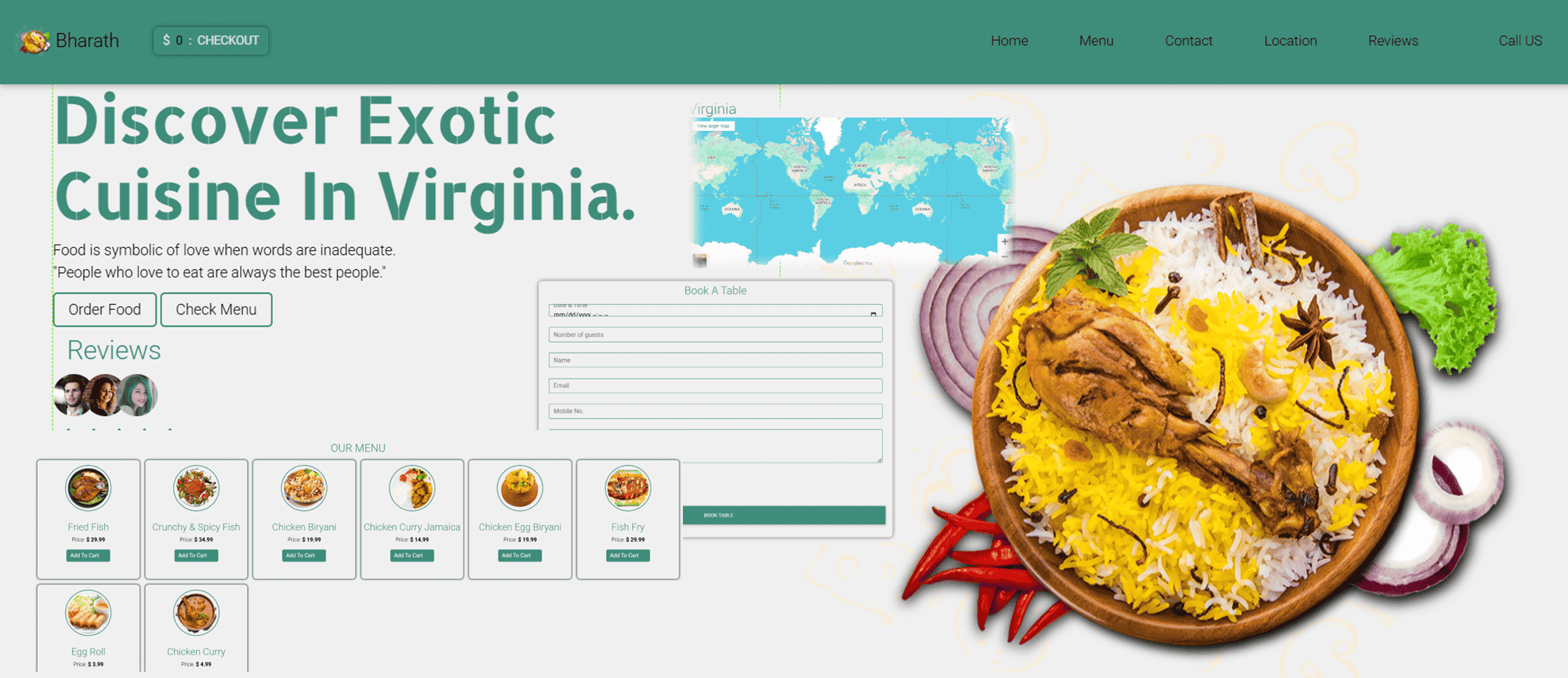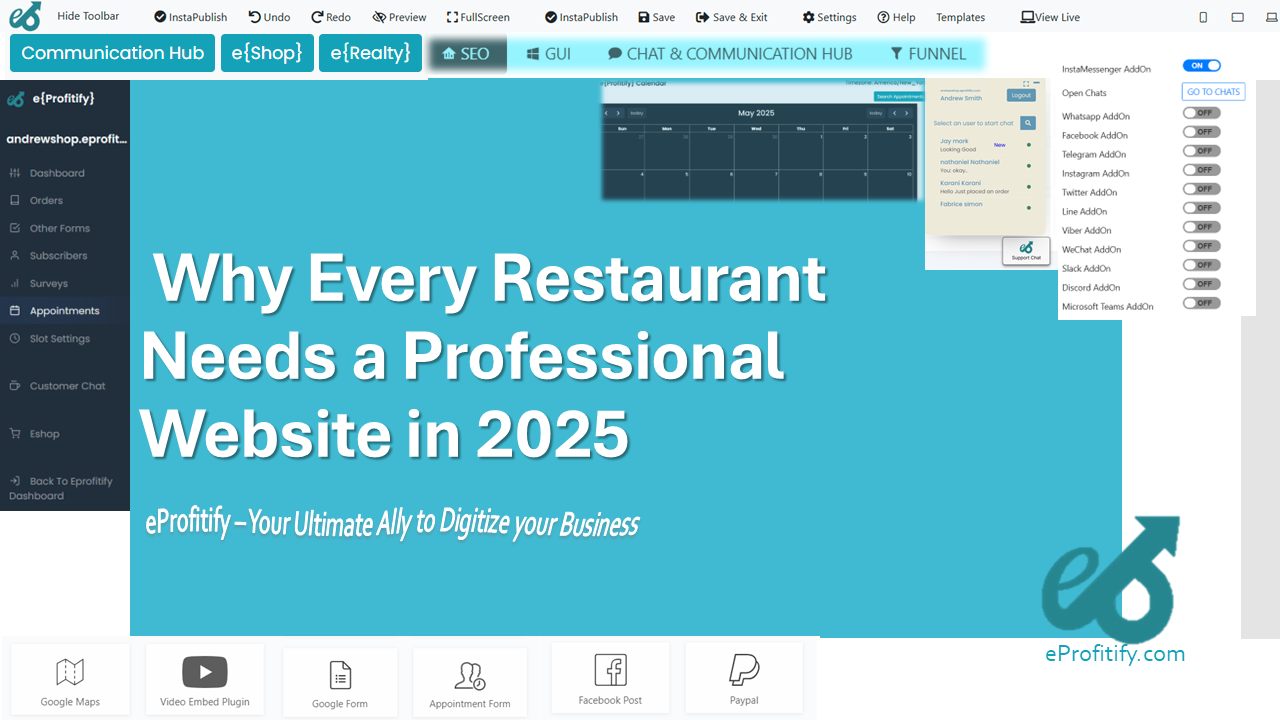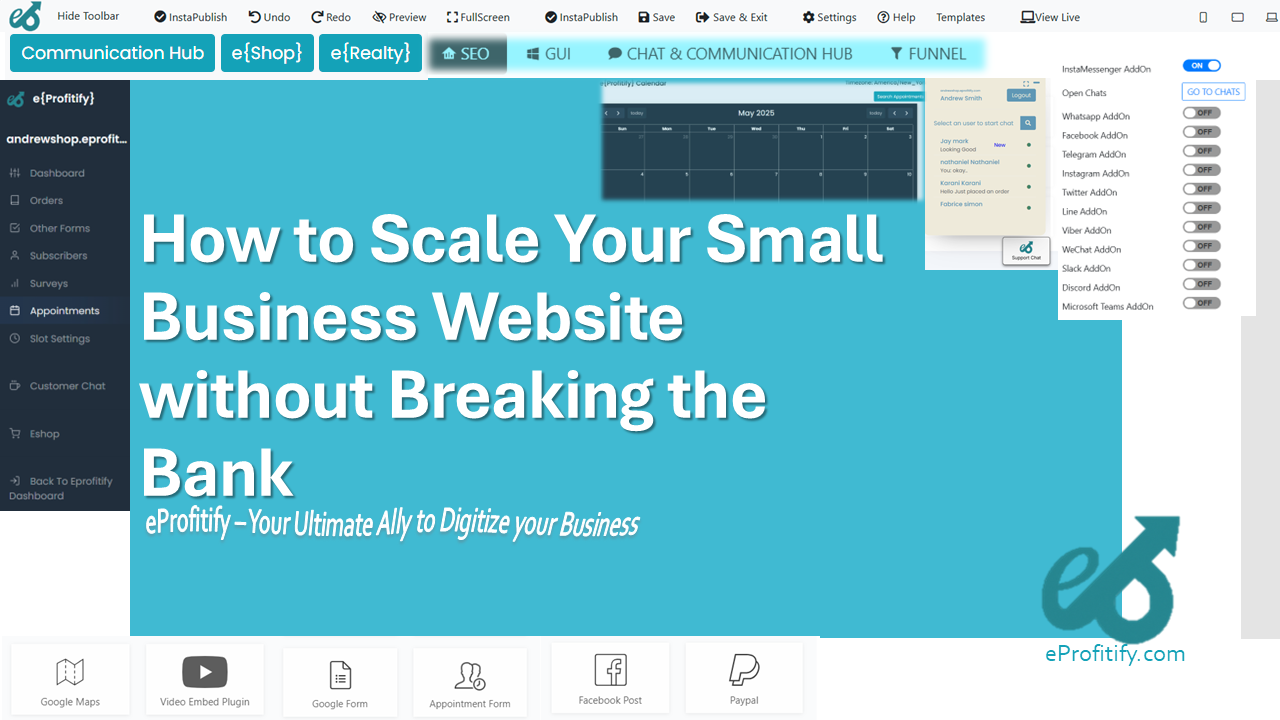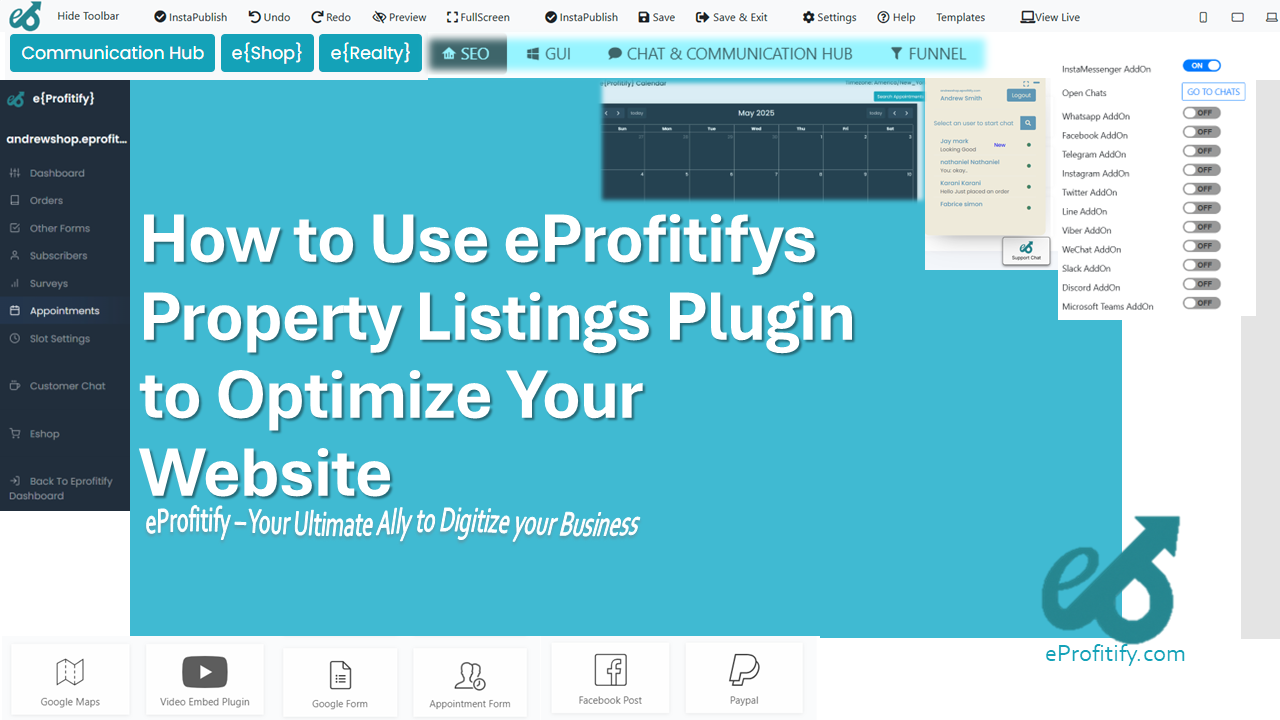How to Implement Structured Data for Your Restaurant Website
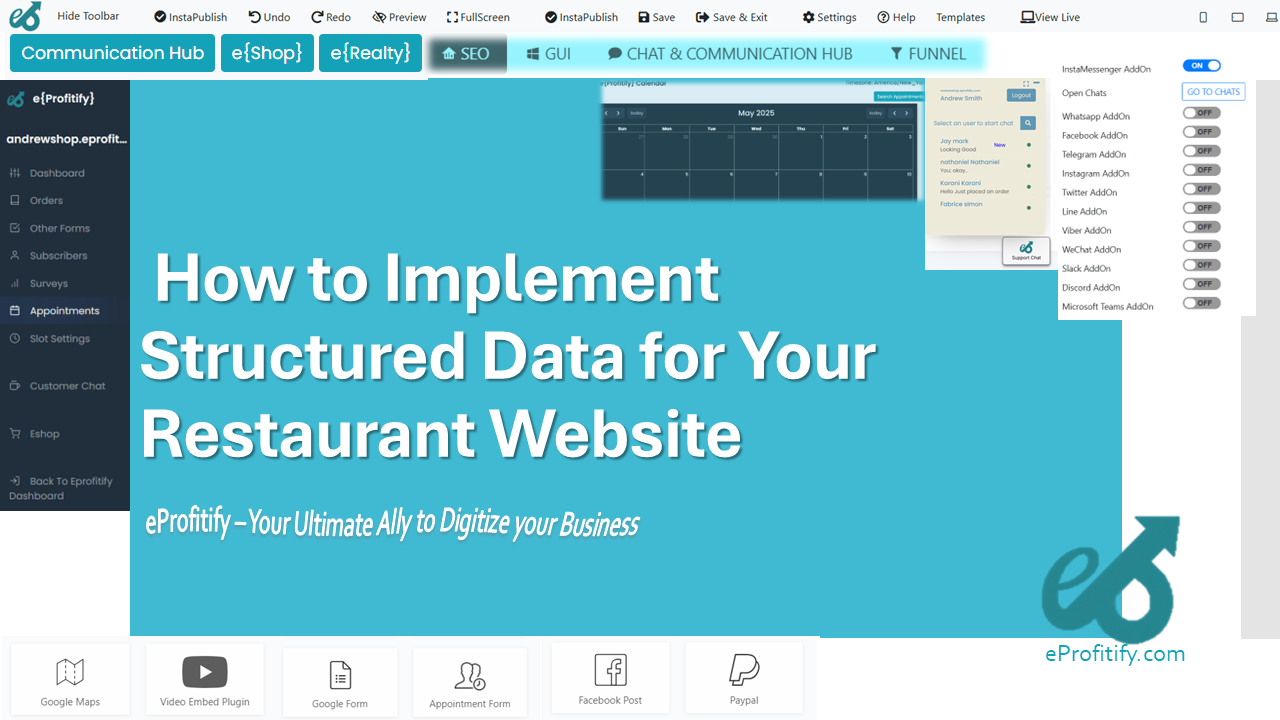
How to Implement Structured Data for Your Restaurant Website: A Comprehensive Guide
In the fiercely competitive restaurant industry, establishing a robust online presence is not just an option—it’s a necessity. With 46% of Google searches seeking local information (HubSpot), your restaurant’s visibility in local search results can make or break your success. Structured data, a powerful yet underutilized SEO tool, can elevate your website’s search rankings, drive traffic, and enhance customer engagement. This guide explores how to implement structured data effectively and highlights how eProfitify, a leading website management platform, streamlines this process while offering tools like CRM, appointment management, and e-commerce integration.
What Is Structured Data?
Structured data, often implemented via Schema.org markup, is a code format that helps search engines understand your website’s content. For restaurants, this includes details like your menu, operating hours, location, reviews, and events. By tagging this information with schemas, search engines can display rich snippets—enhanced search results with star ratings, prices, or booking buttons—boosting click-through rates (CTR) by up to 30% (Search Engine Journal).
Why Structured Data Matters for Restaurants
- Improved Local SEO: 88% of consumers trust online reviews as much as personal referrals (BrightLocal). Structured data ensures your ratings and location appear prominently in local "map pack" listings.
- Higher CTR: Rich snippets grab attention. Restaurants using structured data report a 20–30% increase in CTR, according to SEO studies.
- Voice Search Optimization: Voice assistants like Siri and Alexa rely on structured data to deliver quick answers, making your restaurant more discoverable.
Steps to Implement Structured Data
-
Identify Relevant Schema Types
Use JSON-LD (JavaScript Object Notation for Linked Data) to mark up:- Restaurant: Includes name, cuisine, and price range.
- LocalBusiness: Address, phone number, and hours.
- Menu: Dishes, descriptions, and prices.
- Review: Aggregates customer ratings.
-
Generate and Add JSON-LD Code
Manually create code or use tools like Google’s Structured Data Markup Helper. For example:<script type="application/ld+json"> { "@context": "https://schema.org", "@type": "Restaurant", "name": "Your Restaurant", "image": "logo.jpg", "address": { ... }, "menu": "https://yourrestaurant.com/menu" } </script>Embed this code in your website’s HTML header or content management system (CMS).
-
Validate with Testing Tools
Use Google’s Structured Data Testing Tool or Rich Results Test to spot errors. -
Monitor Performance
Track impressions and CTR via Google Search Console. Update schemas regularly to reflect menu changes or special events.
Challenges in Implementation
- Technical Complexity: Manually coding JSON-LD requires developer expertise.
- Time-Consuming Updates: Keeping hours or menus current across platforms is tedious.
- Integration with Tools: Syncing reservations, reviews, and CRM data demands cohesive systems.
eProfitify: Simplifying Structured Data and Beyond
Here’s where eProfitify, a holistic website publishing and management platform, transforms the game. Designed for restaurants, it automates structured data integration while offering tools to enhance customer experience:
-
Automated Schema Markup
eProfitify’s CMS auto-generates JSON-LD code based on your input (e.g., menu uploads, hours). No coding needed—ensuring your site stays search-friendly. -
Appointment Management
Sync reservations with schema for events, letting Google display real-time booking availability. Reduces no-shows and streamlines operations. -
E-Commerce Integration
Sell gift cards or meal kits with product schema markup. Offer promo codes via the platform, boosting sales during off-peak hours. -
CRM & Reputation Management
Track customer preferences and feedback. Automatically solicit reviews post-visit, which populate schema-backed rich snippets. -
Instant Messaging
Resolve customer queries in real time via integrated chat, improving satisfaction and review scores. -
Analytics Dashboard
Monitor traffic, CTR, and conversion metrics linked to structured data efforts. Adjust strategies using actionable insights.
The Impact: Statistics & Outcomes
Restaurants leveraging structured data and tools like eProfitify report measurable gains:
- 30% higher CTR from rich snippets (Search Engine Journal).
- 50% faster website updates via automated CMS workflows.
- 20% increase in reservations through integrated booking systems.
- 88% customer trust from prominently displayed reviews (BrightLocal).
Conclusion
Structured data is a cornerstone of modern SEO, enabling your restaurant to stand out in crowded search results. Yet, managing it manually is time-intensive. Platforms like eProfitify eliminate this burden by automating schema markup and unifying critical operations—CRM, online ordering, and reservations—into one dashboard. By combining structured data’s power with eProfitify’s all-in-one toolkit, restaurants can boost visibility, customer trust, and revenue. Don’t just compete; dominate your local market with smart data and smarter tools.


